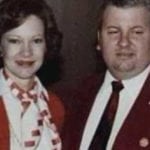 Technology
Technology  Technology
Technology  Humans
Humans 10 Everyday Human Behaviors That Are Actually Survival Instincts
 Animals
Animals 10 Animals That Humiliated and Harmed Historical Leaders
 History
History 10 Most Influential Protests in Modern History
 Creepy
Creepy 10 More Representations of Death from Myth, Legend, and Folktale
 Technology
Technology 10 Scientific Breakthroughs of 2025 That’ll Change Everything
 Our World
Our World 10 Ways Icelandic Culture Makes Other Countries Look Boring
 Misconceptions
Misconceptions 10 Common Misconceptions About the Victorian Era
 Mysteries
Mysteries 10 Strange Unexplained Mysteries of 2025
 Miscellaneous
Miscellaneous 10 of History’s Most Bell-Ringing Finishing Moves
 Technology
Technology Top 10 Everyday Tech Buzzwords That Hide a Darker Past
 Humans
Humans 10 Everyday Human Behaviors That Are Actually Survival Instincts
 Animals
Animals 10 Animals That Humiliated and Harmed Historical Leaders
Who's Behind Listverse?

Jamie Frater
Head Editor
Jamie founded Listverse due to an insatiable desire to share fascinating, obscure, and bizarre facts. He has been a guest speaker on numerous national radio and television stations and is a five time published author.
More About Us History
History 10 Most Influential Protests in Modern History
 Creepy
Creepy 10 More Representations of Death from Myth, Legend, and Folktale
 Technology
Technology 10 Scientific Breakthroughs of 2025 That’ll Change Everything
 Our World
Our World 10 Ways Icelandic Culture Makes Other Countries Look Boring
 Misconceptions
Misconceptions 10 Common Misconceptions About the Victorian Era
 Mysteries
Mysteries 10 Strange Unexplained Mysteries of 2025
 Miscellaneous
Miscellaneous 10 of History’s Most Bell-Ringing Finishing Moves
10 People Who Are Nothing Like The Film Characters They Inspired
“Based on a true story” doesn’t always mean you’re about to hear the truth. Filmmakers are producing entertainment; they have to change a few things to make it work. It’s only natural that a movie is going to leave a few things out.
But it can be more than just a few things. Sometimes, the people who inspired our favorite movie heroes are completely different from what we see on the screen. Occasionally, they’re the exact opposite.
10 Black Hawk Down: John Stebbins
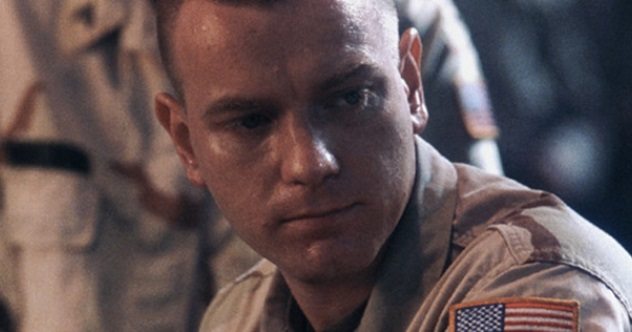
Every character in the movie Black Hawk Down shares a name with a real person who fought in the Battle of Mogadishu in 1993, except for one. Ewan McGregor’s character, John Grimes, is based on a real person named John Stebbins. They changed the last name because they didn’t want people Googling him. If they did, they’d find out that the movie’s hero is a convicted child rapist.
Like in the movie, the real John Stebbins was a brave hero in Somalia. When he came home, though, he turned into a horrible monster. That’s something his wife found out five years after the battle, when Stebbins’s six-year-old daughter told her that her father “did sex to [her].”[1]
Stebbins was arrested and sentenced to 30 years in prison for raping and molesting a child. All of that came out before the movie was made, but they still kept him as one of the main heroes of the film, only agreeing to change his name when the Pentagon asked them to.
Stebbins’s ex-wife was furious about it. “They’re going to make millions off this film in which my ex-husband is portrayed as an All-America hero,” she complained when the film came out. “The truth is he is not.”
9 Captain Phillips: Richard Phillips
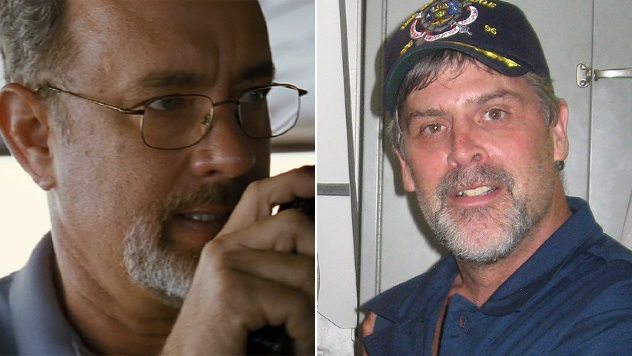
In the movie, Captain Phillips is a hero. He tries to keep his crew away from the Somali pirates who hijack his ship, and when they attack, he’s ready to risk his own life to protect the others. But Captain Phillips is a real person, and according to the people who know him, he’s anything but a hero.
Phillips’s crewmates have called him a “sullen, self-righteous man.” As far as they’re concerned, it was his fault they got attacked by Somali pirates in 2009.
Before they set sail, Phillips was explicitly warned to watch for pirates. He was told that 16 ships had been attacked by pirates in the last three weeks and warned not to go within 1,000 kilometers (600 mi) of Somalia—and he ignored them.[2] He sailed to within 378 kilometers (235 mi) of the Somali coast.
His crew tried to stop him, too. They begged him not to go into pirate-controlled waters, but Phillips just told them that he “wouldn’t let pirates scare him.” Then, when they were attacked, the crew begged Phillips to follow protocol, cut power, and lock everyone below the deck. Phillips, though, insisted he had a “plan” that would take care of these Somali pirates. He ignored both protocol and his crew, stayed above deck, and got himself captured.
8 Little House On The Prairie: Pa Ingalls
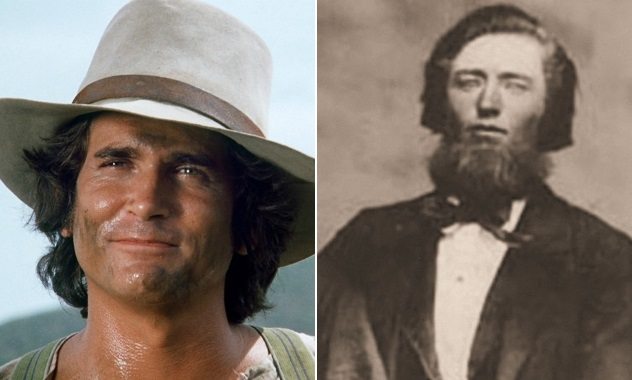
Laura Ingalls Wilder immortalized her father, Pa Ingalls, as the sparkling-eyed, loving father of her family. Her Little House on the Prairie series is about as wholesome as stories can get. It’s one of those treasured little pictures of a more a pleasant time where family values mattered.
It probably helps that she didn’t include the time in the 1870s when her father helped hunt down and lynch a family of serial killers.
According to the author, the real Pa Ingalls joined a vigilante posse that went out to hunt the Bloody Benders, a family that slaughtered ten people in Kansas. Her father, she says, rode off with the mob to murder the Bender family and didn’t come back until late the next night. He wouldn’t tell her what happened. All he would say was, “They will never be found.”[3]
It’s unlikely that Pa Ingalls actually killed the Bloody Benders, but at the very least, his daughter thought he was capable of it. So keep that in mind next time you watch Little House on the Prairie: Somewhere on the cutting board is a very special episode where the dad hunts down and kills a serial killer.
7 Deliverance: The Southern Hillbillies
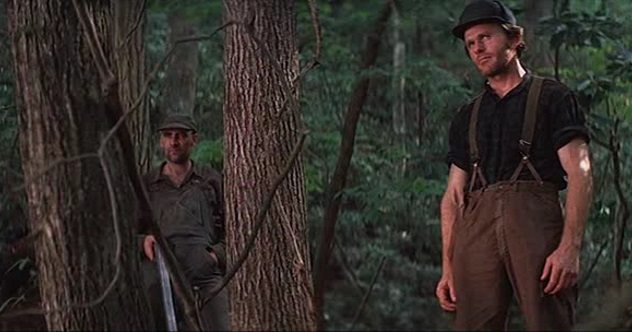
The idea for Deliverance came from a real canoe trip down South. Like in the movie, writer John Dickey and two friends went on a trip down the rivers of Georgia. They met moonshiners, crashed their canoe in the rapids, and got separated from one of their friends, just like the film—but the people were a bit different.
After Dickey and his friends crashed their boat, they bumped into a family of moonshiners called the Gentrys, a name Dickey worked into the story, who would become the inspiration for the backwoods rednecks of Deliverance. These people, though, didn’t make them squeal like a pig. They just tried to help.
The real Georgians invited Dickey and his friends into their home, gave them water, and helped them get back home safely. They wouldn’t even take a dime as gratitude, saying that helping others was just what people do.
One of the friends who went with him, Al Braselton, marveled afterward that the people of Georgia were “always friendly.”[4] Dickey, though, had noticed their casual racism and the way they always had guns on hand more than he’d noticed their friendliness. He turned the experience into a story where the family were murderers and rapists and made the people who’d helped him into backwoods idiots.
6 Crocodile Dundee: Rod Ansell
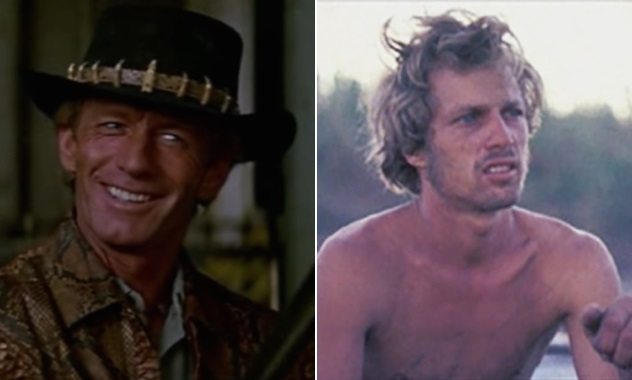
Crocodile Dundee might not exactly tout itself as nonfiction, but it was inspired by a real person. The filmmakers got the idea when they heard about Rod Ansell, a man who spent 56 days stranded in the Australian outback and made it out alive. The real Crocodile Dundee, though, wasn’t the calm, composed hero in the movie. Rod Ansell was a meth addict who died in a shoot-out with the police.
Ansell met his end in 1999 after getting high on meth and letting his girlfriend convince him that Freemasons had kidnapped his son. Soon, the pair were wreaking havoc across the roads of Darwin, Australia, yelling about Freemasons and opening fire on people’s homes.
When a neighbor jumped into his truck to see what was going on, Ansell shot him, blinding him in one eye. Then he tried to steal someone else’s truck. The owner ran out with a baseball bat to stop him, but Ansell pulled a shotgun out of the backseat and shot the owner’s finger off and escaped into the wilderness.
The police found him and tried to talk him down, but a deranged Ansell just yelled, “You’re all dead!” and opened fire.[5] He killed a cop before being shot in the chest himself.
And that’s how the real story of Crocodile Dundee ends: high on meth, shot by a cop while he was reloading his shotgun.
5 Titanic: William Murdoch
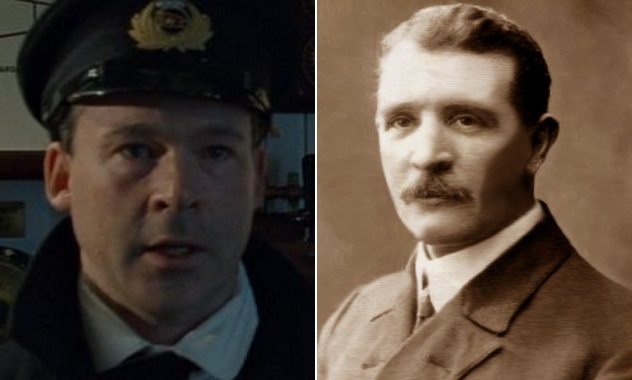
When the Titanic hit the iceberg, Chief Officer William Murdoch had the helm. He was the man in charge when the ship collided, but despite what the movie would have you think, that doesn’t mean he was a monster.
As the boat goes down in James Cameron’s movie, Murdoch becomes unhinged. He accepts bribes to get rich people on lifeboats, pulls out a gun and shoots two men when they get out of control, and then, torn up over the realization that he is a murderer, shoots himself in the head—none of which really happened.
The real William Murdoch spent his last hours alive saving as many people as he could. He went down with the ship, spending his last moment making sure as many people got on lifeboats as he could. Despite the chaos depicted in the film, a witness who was saved by Murdoch said there “did not appear to be any great excitement” when he was around to calm people.[6]
There is one thing the movie got half-right: Murdoch shot himself. But this wasn’t an act of desperate horror after some dark sin. Instead, when Murdoch got the last person he could to safety and had nothing left to do but wait to drown, he put a gun in his mouth and accepted the inevitable.
4 12 Years A Slave: William Ford
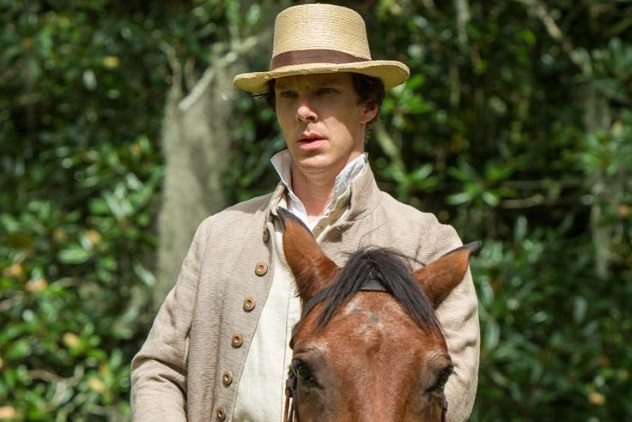
The first white man to buy Solomon Northup after he was sold into slavery was William Ford. In the film, he’s played by Benedict Cumberbatch, who portrays him as hypocritical Christian who preaches strong morals while living off the suffering of his slaves.
The real William Ford was certainly a slave owner—but according to Solomon Northup, he was about as good of a man as a slave owner could be. “Fortunate was the slave who came to his possession,” Northup wrote when he was describing Ford. “Were all men such as he, slavery would be deprived of more than half its bitterness.”[7]
The rest of the horrors of the movie were more or less accurate, but Northup wrote that there was still a little decency to be found, even in the times of slavery. As far as he was concerned, William Ford was the epitome of that human decency.
3 American Sniper: Chris Kyle

The movie version of Chris Kyle seems to completely hate himself. American Sniper spends a lot of its time showing a man who is tearing himself apart over the fact that he kills Iraqis for a living. He’s seen pointing guns at children and begging God to make him shoot them or getting angry at his callous friends for celebrating his kills.
But the real Chris Kyle didn’t have such a hard time with it. He called killing people with a sniper rifle “fun,” once saying, “I hate the damn savages. I couldn’t give a flying f— about the Iraqis.”[8]
And it wasn’t just the Iraqis. The real Chris Kyle had more problems coming home than just connecting with his wife. He spread stories that, during Hurricane Katrina, the government put him on the top of the Superdome and ordered him to pick off American citizens with a sniper rifle. And he claims he did it. In fact, he says he killed 30 people.
That story is almost certainly not true, but Kyle spread it. By the time he came back from Iraq, he wanted people to believe that he’d spent a crisis killing American civilians.
2 The Imitation Game: Alastair Denniston
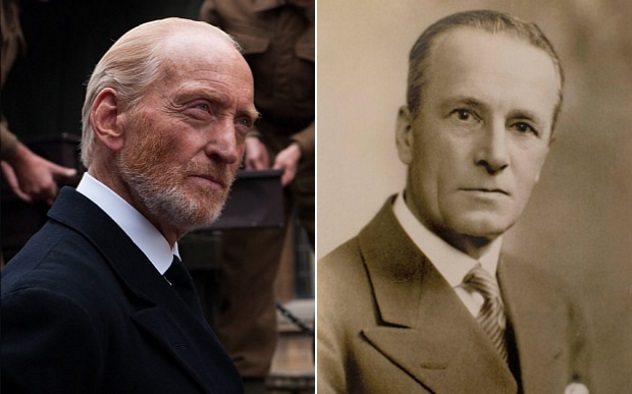
In The Imitation Game, Alastair Denniston is pretty well the antagonist. Sure, he’s treated as a little bit better than Adolf Hitler, but he tries to stop our hero Alan Turing at every turn, and we’re left thinking that if only he hadn’t been born, Enigma probably would have been cracked in a month—which is the exact opposite of what really happened.
If Alastair Denniston hadn’t been born, Enigma never would have been cracked at all. He was the man who sought out and hired Turing, and the people on the team said he was the most “kindly and dedicated” person on the project. According to Turing’s team, Denniston supported them on every idea. He’s also the man who managed to convince the US and Britain to share their intelligence on the code—and if he hadn’t pulled that off, the code probably would never have been cracked.[9]
Even the movie’s writer has called Denniston “one of the great heroes of Bletchley Park.” Still, a movie where everybody gets along is sort of boring—so Denniston got smeared into being the villain.
1 The Revenant: Hugh Glass
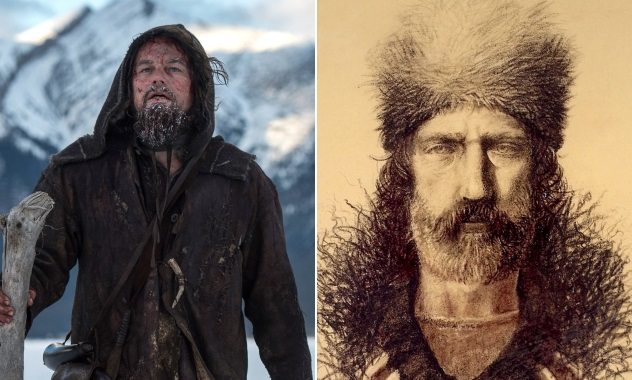
Hugh Glass has an incredible life story. In 1823, he was mauled by a bear, left for dead, and somehow managed to crawl his way across 320 kilometers (200 mi) of wilderness motivated by nothing but revenge. Every part of that is true, without exaggeration, but nothing else about The Revenant is.
Unlike the movie, the real Hugh Glass didn’t have a half–Native American son who was brutally murdered and whose life he had to avenge. He didn’t have some blood debt to repay. He was just mad because he got mauled by a bear and his friends wouldn’t spend a week in the wilderness waiting to watch him die.
Glass made it back to Fort Henry with the help of French trappers, who, in real life, instead of being murderous rapists, were people who helped save his life. Then, like in the movie, he finally made it face-to-face with John Fitzgerald, the man who’d left him for dead. Glass demanded his head.
But the real story is a bit more anticlimactic. Instead of finally getting his revenge, Glass was told that he wouldn’t be allowed to kill Fitzgerald—and he kind of just said “okay” and left.[10]
And that’s the end of the story. After traveling all that distance and escaping the clutches of death, the real Hugh Glass was just told to let it go, and he went on with his life.
For more instances of movies completely missing the mark, check out 10 Historical Battles Hollywood Got Completely Wrong and 10 Things Movies And TV Get Wrong About Mental Health.





